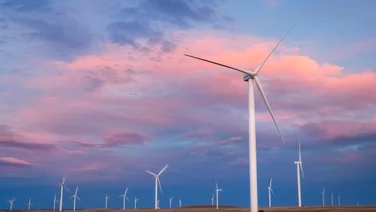Lithium is the soft metal that makes the modern world tick. It’s an essential material in the world’s drive to move away from fossil fuels, powering everything from electric vehicles to the batteries in our phones and laptops.
Electric vehicles in particular are key to this, because whether we like it or not, the world cannot continue to rely on vehicles powered by fossil fuels.
A lithium shortage is something we really don’t need, especially as the effects of climate change become ever more severe.
Unfortunately, that is exactly what is happening right now and it is this shortage that has sparked genuine fears that the electric vehicle boom could come to a juddering halt.
The Eco Experts has investigated the lithium shortage, looking at the reasons why, what the impact will be on electric vehicles, and whether any solutions exist.

What is lithium and why is there a shortage?
Lithium is a metal that is essential for use in rechargeable batteries. Best described as a soft silvery substance, lithium has become one of the most important materials in the modern world, which makes its reported shortage a concerning one.
Is there actually a shortage? Not materially at least, but in the economic sense there definitely is. Basically, demand for lithium right now is outstripping production, so countries mining and refining the material cannot currently keep up with how much is needed.
As for current production numbers, there just isn’t enough lithium being mined to keep pace. Total global production, measured as lithium carbonate equivalent (LCE), was forecast in December at 485,000 tonnes in 2021, growing to 615,000 tonnes in 2022, and 821,000 tonnes in 2023, according to Australia’s Department of Industry.
With global lithium needs at 689,000 tonnes in 2022 and projected to be 902,000 tonnes in 2023, the gap between supply and demand is clear. About two thirds of this is used for electric vehicle batteries.
Why is there a lithium shortage?
The current lithium shortage is down to an inability to mine enough to meet global demand, which is only increasing as the need for rechargeable batteries grows.
Greater numbers of electric vehicles being created each year isn’t helping the lithium supply either. Nor is our insatiable appetite for electrical goods such as smartphones, laptops, and other devices reliant on lithium-ion batteries.
The price of lithium is skyrocketing too. On January 13th this year Allke,, one of the world’s top 10 lithium producers, issued a concerning statement.
They said that lithium prices at the point of loading had reached $20,000 per tonne. This means that prices per tonne have increased by 80% in just a handful of months.
It gets worse when you look at a longer timeline. Prices for lithium as of April 2022 have increased by a staggering 438% in little over a year, driven in part by this escalating global demand.
To stress again, it’s not an actual shortage of lithium itself causing this, but the lengthy extraction process and time needed to process the material.
Another key factor is the ongoing conflict in Ukraine, which began in February 2022 after Russia invaded its neighbour. Russia is one of the world’s largest exporters of nickel, which is a key material in the manufacture of lithium-ion batteries.
Their invasion of Ukraine has destabilised the global nickel supply, causing the prices of the critical material to shoot through the roof.
All of this is contributing to the rising cost of electric vehicles. Tesla owner Elon Musk, tweeted earlier in April about this, calling the price increase of lithium “insane”. He also speculated about Tesla possibly getting into the lithium mining and refining industry, but more than a single company is needed to alleviate the issue.

Which countries produce the most lithium?
Of all the countries in the world, there are currently only eight mining any significant amount of lithium. Right now, the four biggest producers of lithium ore are Australia, Chile, China, and Argentina.
Between them, they account for the vast majority of lithium extraction, supplying the bulk of global demand for this valuable resource.
What this means is that in order to power electric vehicles here in the UK, for example, we would be relying upon a global supply and all the carbon-emitting processes involved.
Lithium mined in say, Australia or South America is then shipped to a processing plant elsewhere, China or Germany for example, before finally making it to the battery manufacturers in its final form.
Right now, Australia is the single biggest supplier of lithium, which they extract from hard rock. The other big three, Argentina, Chile, and China, extract their lithium mainly from salt lakes.
Western countries are currently racing to fire up new mines, with some exciting developments happening on UK shores. Specifically Cornwall, which is the epicentre of the UK’s so-called lithium revolution.
A handful of mining companies have done exploratory mining expeditions over the past few years, but it is Cornish Lithium that has made the most significant progress.
They’ve been able to find lithium concentrations of around 220 milligrams per litre (mg/l) in geothermal waters, which they describe as “globally significant”.
Sure, it’s a far cry from the 2,000 mg/l found in places in South America, but it’s certainly enough to fuel the UK’s need to transition to electric vehicles.
The issue however, is that getting mining operations to the necessary scale takes time. And the lithium shortage is affecting us right now.
Here are the eight countries currently producing lithium in significant quantities:
| Rank | Country |
| 1 | Australia |
| 2 | Chile |
| 3 | China |
| 4 | Argentina |
| 5 | Brazil |
| 6 | Zimbabwe |
| 7 | Portugal |
| 8 | Namibia |
What do we use lithium for?
Lithium is best known for its use in rechargeable batteries, because of its ability to hold charge and its lightweight nature. This is what makes it so important, as without it we’d struggle to power half the objects we now use on a daily basis.
It’s also used in creating heat-resistant glass, ceramics, and in the production of steel and aluminium. Something a lot of people aren’t aware of is the importance of lithium in nuclear fusion. When converted to lithium hydride, it acts as fuel for the key fusion stage of a thermonuclear bomb.
Here’s a breakdown of lithium’s main uses:
- Electric vehicle batteries
- Batteries for smartphones, laptops, and other electrical goods
- Heart pacemakers
You can find out more about what minerals are in EV batteries by going to our page.
What impact will the lithium shortage have on electric vehicles?
A global shortage of lithium will inevitably lead to a reduction in how many electric vehicles are made. Doubly so when the demand for electric vehicles is increasing at the pace it currently is.
In 2020, electric vehicle sales in the UK increased by 125%, with this figure almost doubling in 2021. Analysts predict that the demand for electric vehicles will continue to double or even triple every year until 2030, making the lithium shortage a concerning prospect for EV manufacturers.
This is the key reason why experts are finding ways to recycle electric vehicle batteries – to reduce the need to mine for more lithium. Find out more about this on our page What Happens To Dead Electric Car Batteries?
What’s the solution to the lithium shortage?
Unless there is a massive, globally coordinated ramping up of lithium mining, the shortage looks set to continue.
A positive note is that there are more and more lithium mining companies springing up all the time, but again, the slow process of extracting and refining the material means this won’t alleviate the shortage for a while.
Other alternatives to lithium do exist, which could help but as you’ll see they struggle to match up to lithium. One such alternative is salt – yes you read that right. Salt is chemically similar to lithium, and can actually be used to create sodium-ion batteries.
The downside is that sodium-ion batteries are almost three times heavier than lithium-ion batteries. So powering a car with one is going to come at a significant cost to the vehicle’s weight.
They’re also less powerful because of their lower cell voltage, meaning electric vehicles will not only be heavier, but will be unable to travel as far.
Speaking of salt, the world’s oceans actually hold an astonishing amount of lithium – around 180 billion tonnes of the stuff. The problem is that it’s all diluted in the estimated 343 quintillion gallons of water making up the big blue.
Various extraction methods have been put forward, but all remain at the experimental stage only and certainly none are able to help with the global lithium shortage.
Summary
Make no mistake, the lithium shortage is a worrying problem that will have ramifications around the world.
The need to address climate change becomes more serious with every passing day, and a delay in our ability to move away from fossil fuels could be dire.
With no fix-all solution currently existing, it seems like the only tangible thing to be done is for international powers to unite and invest in a huge expansion of lithium mining.
Of course, this has potential ramifications for the environment, as lithium mining and processing isn’t exactly the cleanest thing. Moving to lithium alternatives aren’t feasible either, because of inefficiency and weight issues.
All in all, definitely not an ideal situation.






